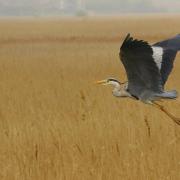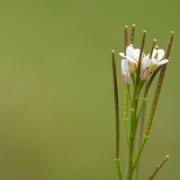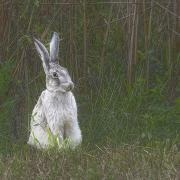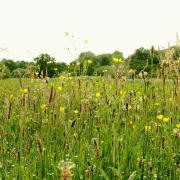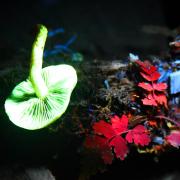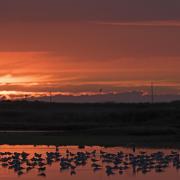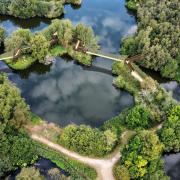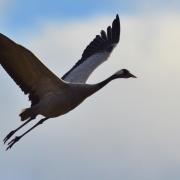Find out why people are getting passionate abut recording the changing seasons
The green shoots of Spring
Fall in love with phenology this month, says Sara White and find out why thousands of people are getting passionate about recording the changing seasons.
Love is most certainly in the air: I’m going off to hug a tree. It’s a real brute at 122 feet tall, the last remaining cedar to have been planted in 1747 by Norfolk landowner, Robert Marsham, founder of the phenology movement.Phenology I hear you say. What’s that? Well, chances are you dabble in phenology without even realising it.It’s those idle conversations over the garden fence to which I’m referring – perhaps you’ve noticed the dainty snowdrops in the woods, or the call of a cuckoo. Maybe you’ve spotted the first swallow on the telegraph wires or an orange tipped butterfly on the buddleia.By keeping a record of “nature’s distinct events”, as Marsham called them, you can help environmental scientists build up a fascinating picture of how changes in our climate affect the natural world.It also allows scientists to make predictions about the future. This has consequences for us all; from how we farm and get to work, to the way our landscape might look.Following a recent study, which analysed the “botanical calendar” of scores of plants, scientists at the Royal Botanic Gardens in Edinburgh predict that by 2050 we can expect malaria-carrying mosquitoes on the south coast and cherry blossom as early as January, and to coin a phrase, that’s just the tip of the iceberg . . .A keen arboriculturist, Marsham started recording his “27 indications of spring” in 1736. These included the arrival of migrant birds, the emergence of flowers like wood anemones and the leafing dates for different species of trees.During his lifetime a pattern emerged, which showed how subtle changes in the seasons were impacting on the life cycles of flora and fauna on his estate at Stratton Strawless. Some species seemed more sensitive to change than others, posing a threat to the delicately-balanced food chain. For instance blue tit chicks usually hatch at a time when there is a glut of caterpillars – get out of synch with one another and the blue tit’s chances of survival are seriously hampered.When Marsham died, aged 89, his work had been recognised by the Royal Society, of which he was a Fellow. His greatest legacy was to form a phenology network by inspiring others to record their seasonal observations.Marsham’s family continued to record data until 1958, when the phenology movement lost momentum, ironically just as we entered a fossil fuel obsessed era.Dr Tim Sparks from the Centre of Ecology and Hydrology (CEH) in Cambridge realised the significance of the Marsham family’s records when he stumbled upon them in the 1990s. Spanning more than two centuries, they revealed a huge amount about the natural world’s reaction to our changing climate.In the midst of the warmest decade to date, this had special resonance for Dr Sparks and he immediately set about trying to revive the phenology movement.Since then “interest has boomed,” he tells me. And not just in the UK either.“The Americans have just started a phenology network building on our successes in Europe,” says Sparks, whose expertise in the subject takes him as far afield as Russia.“Phenology findings featured heavily in the Intergovernmental Panel on Climate Change report,” he adds. The IPCC is the leading body for the assessment on climate change, established by the United Nations Environment Programme and the World Meteorological Organisation “to provide a clear scientific view on the current state of climate change and its potential environmental and socio-economic consequences”.Phenology in the UK has been able to reach an even larger audience since the CEH collaborated with the Woodland Trust in 2000 and with BBC Springwatch in 2005. It is also becoming even more popular in Norfolk thanks to the EDP Naturewatch series in our daily newspaper.As well as recruiting new “recorders”, Dr Sparks is also interested in sourcing and preserving “old data”.“Following the tricentenary celebrations of Robert Marsham in 2008, we found lots of new material, including 50 more letters written by Marsham,” he tells me, enthusiastically. “We hope to publish these together in a second book later this year. There are also a number of other long-term recorders coming to our attention, many of which are women.”Jean Combes, from Surrey is one such long term recorder. She received an OBE in the 2009 New Year’s Honours List for her services to phenology, aged 81.
Snowdrop walksOne of our favourite signs of spring is the snowdrop. And where better to see these delicate buds of hope than on one of the ever-popular National Garden Scheme snowdrop walks? There are two great NGS snowdrop walks in the county this month:
Lexham Hall, home of the Fosters, near Litcham, on Sunday, February 7 from 11am to 4pm. Admission is �4, with children going free. The hall is two miles west of Litcham and six miles north of Swaffham, off the B1145.It is a fine 17/18th century hall (which is not open to the public) with parkland including a lake and river walks, formal garden with terraces, yew hedges, a traditional kitchen garden with crinkle crankle wall, and an extensive collection of scented, winter flowering shrubs and woods, carpeted with snowdrops. There is also a three-acre woodland garden with azaleas, rhododendrons, camellias, spring bulbs, and fine trees.Dogs on leads are welcome in February only, and there will be light refreshments and teas on sale.
Bagthorpe Hall, home of the Mortons, will be open on Sunday, February 14 from 11am to 4pm, with admission �3.50, and children free. The hall is at Bagthorpe, three-and-a-half miles north of East Rudham, off the A148.Home-made teas and organic soups will be available plus the delight of snowdrops carpeting a woodland walk.www.norfolkgardens.org
Signs of SpringRobert Marsham identified 27 signs of spring – here are a few to look out for:• Frogs and toads croaking as they move to breeding pools.• Great crested grebes starting courtship rituals.• Wood anemones coming into flower.• The first swallows arriving.• The call of a cuckoo.• The first fully opened oak leaf.• Seven-spot ladybirds appearing.• The first fully open hawthorn flower (hawthorn has leaves, then flowers. Blackthorn has flowers, then leaves).• Orange-tipped butterflies on the air.• The first clumps of frogspawn.
Spring has sprungScientists now have clear evidence that spring is arriving earlier each year. If we look at the findings from spring 2009, the average date for snowdrops to come into flower was January 29; we were out giving our lawns a first cut on March 20, and we enjoyed the first bluebells in April.The historical records present a very different picture. In 1979, when I was just seven, we had to wait until after Valentine’s Day for the snowdrops to bloom; the lawns didn’t need cutting until a whole month later, and the bluebells flowered in June.



